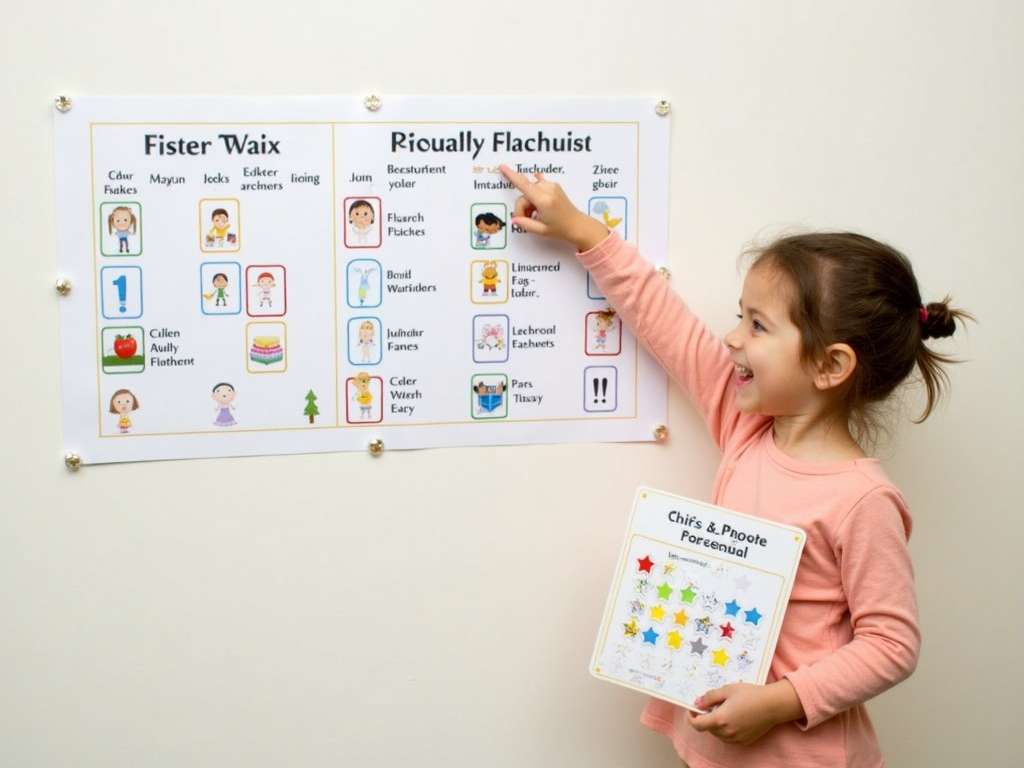Overview
Imagine a morning where your child knows exactly what to expect, transitions smoothly from one activity to another, and feels in control of their day. This isn't a dream—it's the power of visual schedules. These simple yet transformative tools can change lives by providing structure, reducing anxiety, and promoting independence. In this guide, you'll learn why visual schedules are a game-changer, how to create ones your child will love, and the science behind their effectiveness.
What Are Visual Schedules?
Visual schedules are visual representations of a sequence of events or tasks. They can be as simple as a series of pictures on a wall or as complex as a digital app. The key is that they provide a clear, visual way for children to understand what's coming next. This is especially helpful for children who thrive on routine or have difficulty with transitions, such as those with autism or ADHD.

Why Visual Schedules Change Lives
Visual schedules change lives by addressing several core challenges:
- Reducing Anxiety: Knowing what to expect reduces the fear of the unknown.
- Promoting Independence: Children can follow the schedule on their own, building confidence.
- Improving Communication: Visuals can bridge communication gaps, especially for non-verbal children.
- Enhancing Focus: Clear expectations help children stay on task.
I remember the first time I introduced a visual schedule to my son. Mornings were chaotic, with constant reminders and meltdowns. After implementing a simple picture schedule, he started completing tasks independently, and our mornings became peaceful. It was like a weight had been lifted off both our shoulders.
Making Visual Schedules That Kids Love
Creating a visual schedule that your child will love involves personalization and engagement:
- Involve Your Child: Let them choose pictures or stickers for the schedule.
- Use Favorite Characters: Incorporate their interests, like superheroes or animals.
- Make It Interactive: Use Velcro or magnets so they can move items as they complete tasks.
- Keep It Simple: Start with a few tasks and gradually add more.
- Celebrate Success: Use a reward system, like stickers or extra playtime, for completing the schedule.
One parent I know turned their child's schedule into a treasure map, with each task leading to a 'treasure' at the end. The child was excited to follow the map each day, turning routine into an adventure.

How to Create Consistent Routines for Children
Consistency is key when using visual schedules. Here's how to establish and maintain routines:
- Set Clear Expectations: Explain the schedule and what each part means.
- Be Patient: It may take time for your child to adjust.
- Stick to the Schedule: Consistency helps build trust and predictability.
- Adjust as Needed: Be flexible and modify the schedule based on your child's needs.
- Involve the Whole Family: Ensure everyone is on board and follows the schedule.
A consistent routine not only helps your child but also creates a calmer household. When everyone knows what to expect, there's less room for surprises and stress.
Applied Behavior Analysis Strategies for Parents
Applied Behavior Analysis (ABA) is a scientific approach to understanding and changing behavior. Visual schedules are a common ABA strategy. Here are some ABA principles to enhance your visual schedule:
- Positive Reinforcement: Reward desired behaviors to encourage repetition.
- Prompting: Use visual cues to guide your child through tasks.
- Fading: Gradually reduce prompts as your child becomes more independent.
- Generalization: Apply the schedule in different settings to promote flexibility.
For example, you might start by physically guiding your child through the schedule (prompting), then gradually step back as they learn to follow it independently (fading). This approach ensures the skills are transferable to various situations.

Overcoming Common Challenges
While visual schedules are powerful, they aren't without challenges. Here are some common issues and solutions:
| Challenge | Solution |
|---|---|
| Resistance to change | Introduce the schedule gradually and involve your child in the process. |
| Losing interest | Update the schedule regularly with new pictures or themes. |
| Forgetting to use it | Place the schedule in a prominent location and set reminders. |
| Complexity | Simplify the schedule and focus on one task at a time. |
Remember, every child is unique. What works for one may not work for another. Be patient and willing to adapt.
The Science Behind Visual Schedules
Visual schedules are rooted in evidence-based practices. Research shows that visual supports can improve task completion, reduce problem behaviors, and increase independence in children with autism and other developmental disorders. According to a study by the National Autism Center, visual schedules are an established intervention for individuals with autism.
For more information, you can refer to the National Autism Center's National Standards Project.

Conclusion
Visual schedules are more than just a tool—they're a lifeline for many families. By providing structure, reducing anxiety, and promoting independence, they can transform daily routines and improve quality of life. Whether you're a parent, caregiver, or educator, implementing visual schedules can make a profound difference. Start small, be consistent, and watch as your child thrives.
For further reading, check out these recommended articles: - "10 Tips for Managing Meltdowns in Children with Autism" - "Creating a Sensory-Friendly Home Environment" - "The Power of Play: How to Use Play-Based Learning for Skill Development"
Discuss Here